High-Risk Areas for Botox Injections and Why You Need Professional Help

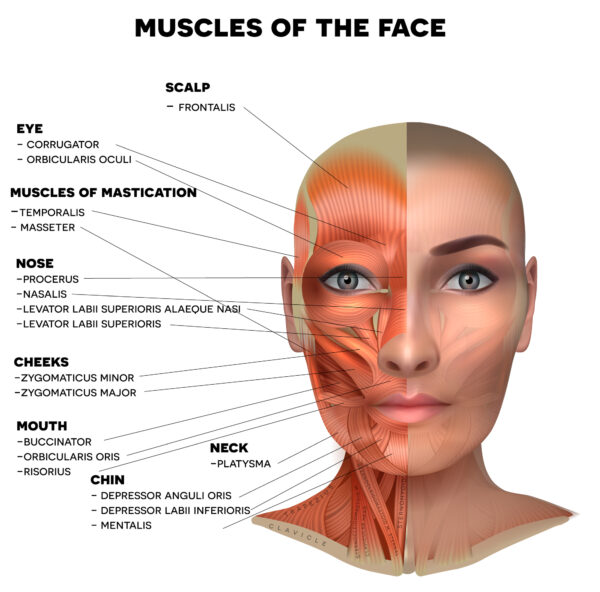
The medical professionals must be trained and certified in facial anatomy, injection procedures, and treatment risks.
The safety of procedures like Botox injections for cosmetic purposes must always come first. The good news is that Botox has a well-established safety profile thanks to years of study, clinical studies, and widespread use. Yet, it is essential to realize that the safety of Botox largely depends on the skill and education of the doctors and injectors doing the procedure.
Medical professionals and injectors should have extensive training before administering Botox.
In order to ensure that these specialists have a thorough awareness of facial anatomy, injection techniques, and the risks associated with the treatment, they need to undergo specialized training and obtain appropriate certification. The training they received prepared them to administer Botox injections safely and successfully.
An experienced and appropriately trained physician or injector will carefully assess each patient’s needs, medical history, and suitability for Botox treatment. They’ll figure out how much to give you, where to inject you, and what you need to know to stay safe.
A trained professional who has an eye for detail and aesthetic judgment to complement the patient’s existing features should apply Botox for maximum effectiveness. When designing a treatment plan, they will take into account the patient’s facial symmetry, muscle dynamics, and specific therapy goals.
The value of education and preparation goes beyond merely earning a degree or certificate. Doctors and injectors should also be aware of the most recent research and recommendations for Botox treatment. Patient safety is improved through their involvement in continuing education opportunities, including workshops, conferences, and peer discussions.
Botox Injection No-No Zones
Knowing where not to inject Botox is just as crucial as knowing where to inject it. While Botox is generally safe in the hands of a trained medical expert, there are some “risk areas” on the face where extra care should be taken. Let’s take a look at these potential trouble spots and see why Botox injections are best left to the pros.
Dangerous Spots for Botox
The eye area
The skin around the eyes is really sensitive and needs special attention when getting Botox injections. Botox can cause serious side effects if injected into the wrong muscles or too close to the eyes. Ptosis, or droopy eyelids, can occur if Botox is injected into the muscles of the upper eyelids. This might cause a visual obstruction or an unbalanced look. Similarly, if Botox is injected into the improper muscles around the eyes, the result can be dry eyes or an inability to fully close the eyelids. Expert injectors know how to strike the right balance and use precise techniques to guarantee patient safety and optimal outcomes.
The forehead area
Where Botox is frequently administered to alleviate horizontal lines and wrinkles. Nonetheless, knowledge and skill are essential for avoiding unintended consequences. Injecting Botox into the lower forehead can lead to droopy eyebrows and an unnatural appearance by paralyzing the muscles that control facial expression. However, injecting Botox in the upper forehead can result in a frozen forehead or an unnatural appearance. Injectors who have received the proper training will evaluate the patient’s facial anatomy, consider the patient’s desired results, and then use the appropriate dosage and injection technique to create a balanced and natural appearance.
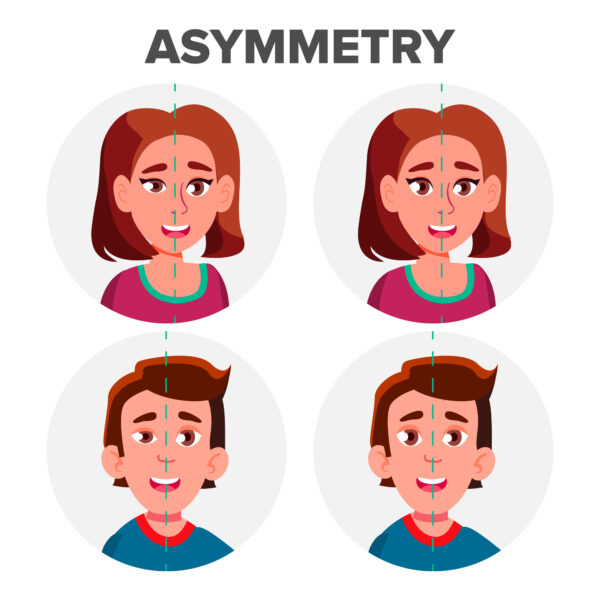
Injecting Botox into the wrong muscles around the mouth can create facial asymmetry, speech problems, and aesthetically undesirable changes to the smile.
The mouth and lip areas
They are dynamic and complex, so it’s important to have a skilled injector work on them. Botox injections into the improper muscles surrounding the mouth can cause asymmetry in the face, disrupt speech, and alter the appearance of the grin. A “frozen” smile or difficulty expressing emotion may come from injecting too much Botox into the muscles responsible for smiling, for example. Lip injections might also lead to trouble communicating, eating, or feeling numb. A skilled injector will know just where to inject to minimize the look of lines around the mouth without interfering with the natural movement of the lips.
Nasal Area
While injecting Botox into the nose, care must be taken because of the area’s complexity and sensitivity. If Botox is injected into the nose without proper training and experience, the patient may experience breathing problems or a cosmetic alteration to the nose. Expert injectors are familiar with the nasal anatomy and are aware of the potential dangers of administering Botox injections there. They are well-versed in which areas to avoid, and they use gentle procedures to guarantee that the integrity of the nose is preserved. Skilled injectors prioritize patient safety by avoiding inappropriate injections in the nose area while accomplishing the desired cosmetic goals in other areas of the face.
Botox Injections Should Be Performed by Professionals
Training is crucial for Botox injections since a professional injector knows the specific dangers connected with each location of the face and the structure of the facial muscles. They are trained to analyze each individual’s Botox requirements, deliver the correct dose, and maximize the benefits of the treatment while minimizing any potential side effects.
Dentox makes it easier for medical and cosmetic professionals to learn how to inject Botox safely and effectively in high-risk locations. Register for a seminar at any of our numerous U.S. sites or participate in a live, online, or on-demand class. Visit https://dentox.com/live-courses/ and https://dentox.com/all-courses/botox-training/ to read more about our live and online training options, respectively.
An Overview of Botox for Jaw Muscles and How It Works


Botox is highly effective in treating temporomandibular joint disorders (TMJ) and reducing teeth grinding and clenching.
It’s true that everyone seems to be striving for a snipped, glass-like jawline. The jawline frequently loses its distinct definition as the face ages naturally. Although injectables are frequently used to reduce wrinkles and smooth out fine lines, Botox can also be used for mind-blowing results.
A smooth, tight jawline can be achieved with a few well-placed Botox injections, sometimes in conjunction with other aesthetic procedures. Many injectors think Botox is the ideal treatment for reducing teeth grinding and clenching, as well as for easing symptoms of temporomandibular joint disorders (TMJ), in addition to its anti-wrinkle applications. Here is all the information you need on administering Botox to slim the face and relax the jaw muscles.
Botox’s Positive Effects on the Jaw
Botox injections into the masseter (or jaw) muscles can relieve TMJ symptoms, make the jawline look slimmer, and reduce teeth grinding and clenching. The masseter muscles, which run along the sides of your lower jaw posteriorly, are the ones Botox is most effective on.
But if you don’t get it fixed, your jaw can start to square up, and you’ll be in a lot of discomfort. Hypertrophy of the face muscles, dental decay, jaw pain and stiffness, disturbed sleep, and other complications can all develop over time.
Botox injections in the jaw area are helpful for treating TMJ disorder and easing stress-related jaw strain. Pain, stiffness, and difficulty opening and closing the mouth are all symptoms of the temporomandibular joint disorder (TMJ), a pathological condition affecting the jaw joint and the muscles that control jaw movement.
A few quick injections of Botox are a painless alternative to bulky bite plates and other irritating dental tools for weakening the masseter muscles and improving TMJ.
How Botox makes the Jawline thinner
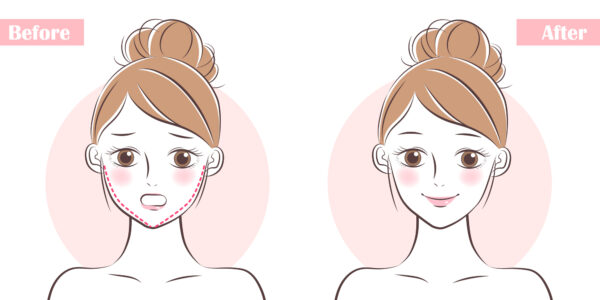
Botox injections in the jaw area can help you obtain a thinner lower face.
A slimmer lower face can be achieved using Botox injections in the jaw area. Facial volume, collagen and elastin production, and the density and resorption of face bones all decrease with age, which leads to a loss of skin firmness and elasticity.
As a result of these alterations, the jawline and jowls become less defined due to drooping and tissue laxity. In order to achieve a softer, more feminine appearance while also slimming the lower face and regulating facial proportions, Botox can be used to relax the muscles around the rear of the jawline. Instead, the face can take on a more feminine heart or oval form than a masculine square or rectangle.
There’s no denying the dramatic effects of a few Botox injections on the lower third of the face and the face as a whole, but reducing the size of your jaw with Botox won’t reverse the effects of time on your jaw.
Who’s qualified?
Jawline Botox injections can help people with enlarged masseter muscles reduce jaw clenching, grinding, and TMJ symptoms. Prospective patients by having them clench their jaw, which shows the masseter muscle. Muscle bulges indicate treatment eligibility.
Although Botox injections into the jaw have many benefits, they may actually make the jawline look worse in people who already have excessive laxity or drooping in the jowl area due to the natural aging process. By relaxing the jaw muscles, one can move facial tissues away from the jowls. That’s why it’s important to carefully choose patients and assess them before beginning treatment.
How does someone administer Botox to the jaw?
Before they mark the injection sites by outlining the muscle with a white chalk pencil, your injector or dermatologist will examine and clean the area. As everyone’s muscle growth is different, there is no recommended dosage for treating the jawline. However, to achieve the required relaxing effect, typically 20 units of a neuromodulator are injected into each masseter muscle.
Injections of Botox into the jaw feel like tiny, barely perceptible pinpricks. It is possible to use topical anesthetics beforehand, but this is rarely necessary. The process moves quickly with little downtime.
Treatment by a trained expert familiar with facial anatomy is recommended to reduce the likelihood of negative reactions. A lowered grin may result from an incorrect injection into the masseter muscle. However, if the injection is administered too superficially, the masseter will appear enlarged.
The effects of Botox can be seen anywhere from three to 10 days after the injections are made. You’ll gradually start to feel less stress on the lower jaw if you’re receiving treatment to improve clenching symptoms. However, the benefits only last for a few months before more treatments are necessary. This is similar to how Botox for aesthetic purposes works. Dentox can show you how to provide your patients with the best possible outcomes when injecting Botox into their chins and jaws. This may encourage patients to return for additional aesthetic treatments. Dr. Howard Katz, one of the best injectables instructors in the country, gives his students the chance to study with him in person, online, or at their own convenience. Dentox can provide you with top-notch education so that you can provide the greatest care for your patients and increase your business’s profits. Visit https://dentox.com/live-courses/ and https://dentox.com/botox-training/ for details on upcoming in-person and online patient training programs, as well as registration links.
How to Keep Your Skin and Body Safe from the Harm Caused by the Latest Fads. Is Botox among these?


Do not give prey to dangerous social media trends.
Keep in mind that self-love is crucial. Do not fall for social media trends that put your life in danger. Accept yourself unconditionally and celebrate your uniqueness.
The beauty trends promoted by today’s myriad social media influencers range from skin- and body-friendly to downright dangerous. Understand that influencers in the beauty industry are not trained professionals, despite their claims to the contrary. Because of this, before deciding whether or not to use a beauty hack, you should seek the advice of a medical or beauty expert and conduct in-depth research on the subject.
Some popular beauty tips and tricks are listed below, along with their potential dangers to your health.
Pore strips:
Nose strips, sometimes called pore strips, are a popular method for clearing the nose of blackheads and whiteheads. Yet, it is crucial to learn how much damage they can do to the skin. Pain is an indicator of potential danger, and removing pore strips can be rather painful. It threatens the skin’s protective barrier and underlying tissues. To combat blackheads and whiteheads, try using AHA BHA toners, AHA BHA peels, or retinol.
Charcoal peel-off masks:
Skin care products containing charcoal are popular for their ability to cleanse and purify the skin. Charcoal peel-off masks resemble nothing so much as enlarged pore strips. These masks are extremely unpleasant to remove and can cause significant damage to the skin’s outermost protective layer. The skin might be damaged by using any peel-off mask. In place of peel-off masks, consider using homemade or store-bought face packs.
Botox:

If Botox is administered improperly, it might lead to serious health problems.
There has been a recent uptick in the popularity of cosmetic procedures like Botox and fillers. But Botox can be dangerous if administered incorrectly and cause a host of other issues.
Do your research before making any rash decisions based on what you see on social media when it comes to cosmetic enhancements. Make sure a trained injector does it. Skilled medical practitioners offering Botox injections can help their patients avoid appearing overdone by giving them a more natural appearance.
Dentox is a course designed to teach medical professionals how to give Botox injections safely and effectively. Learn how to improve people’s health, appearance, and happiness through your practice. Helping patients is possible if you have the necessary expertise. You can learn more about our in-person and online patient training courses, as well as how to register, at https://dentox.com/live-courses/ and https://dentox.com/botox-training/.
Lip plumping:
There is now a plethora of lip-plumping tools, creams, and glosses on the market to help you achieve that full, pouty look. While others choose lip fillers, some choose a more natural approach. Allergies, infections, skin damage, severe swelling, and bruising are some of the potential side effects of lip plumping. An alternative is to use makeup tricks to make your lips appear fuller.
Using lipstick as blush:
Many influential people on social media advocate using lipstick in place of blush or even eyeshadow. The pigmentation of lipsticks is extremely strong, although that of blush and eyeshadow is just moderate. It is best to steer clear of this beauty hack because using lipstick as blush or eyeshadow can result in pigmentation and melasma.
Using beauty tools:
No cleansing or shaping tool, including vibrating massagers, derma rollers, shaping rollers, or gua sha tools, can produce noticeable changes to one’s facial profile. Even though a lot of influential people are pushing these tools, they are just marketing tricks. They can be harmful because they remove the skin’s protective barrier and natural oils when used excessively. Simply massaging your face with clean hands and some oil or cream will do the trick.
Eyebrow and eyelash extensions:
It is concerning that so many people are drawn to this trend, given the high risk of harm they are putting themselves through. Some of the possible adverse effects are increased blood pressure, bruising, allergic reactions, and even temporary or permanent vision loss. Use makeup tricks like false eyelashes and eyebrow pencils to shape and fill in your brows to achieve the look you want.
Always keep in mind that the most essential thing is to love who you are. The tricks used on social media could endanger your health, so you shouldn’t allow yourself to fall for them. Accept and value yourself just as you are at this moment in time. Makeup is a tool that will help you realize your ideal appearance. If you do decide to undergo any aesthetic treatments, however, you should make sure that you visit a professional who has the appropriate training and knowledge in the field before beginning any procedures.
You are able to make well-informed decisions that put your health and happiness first if you put an emphasis on loving yourself first and if you are aware of the potential dangers that are linked with various beauty trends. Do not let the opinions of others on social media determine how much you value yourself. Instead, you should center your attention on taking care of yourself and improving your natural attractiveness in ways that are both safe and responsible.
Keep in mind that no one else is quite like you and that you are stunning in your own way. Honor who you are as an individual and make decisions that are congruent with your values and the state of your health.
The Unsettling Beauty Trend to Steer Clear of This Year


The pandemic has had a devastating effect on virtually every sector of the economy, from tourism to retail. Haircutting parlors and cosmetic surgery clinics closed their doors along with the rest of the economy, but the beauty industry has continued to thrive. Since many of us had to deal with acne brought on by face masks and other skin gripes brought on by the pandemic, skincare was the strongest category, especially during the first lockdown. Following the lead of skincare, the demand for cosmetic treatments skyrocketed as the world once again became more accessible.
More than a quarter of British women, and 44% of those between the ages of 25 and 34, believe that the lockdown has made them look older. Because of this mindset, demand has increased for cosmetic procedures like Botox and others. Perhaps the so-called “Zoom boom” also contributed to the growth. Many of us have spent considerable time gazing intently at our own faces during video calls, which has likely increased our self-awareness and, in turn, our insecurities about our looks. Although anti-wrinkle injections still enjoy widespread popularity, dermal filler (with lips arguably the most commonly treated area) and chemical face peels with strong exfoliating acids are experiencing explosive growth in the United Kingdom.
More people are learning how to become injectors as a direct result of the epidemic
Even though aesthetic treatments can be helpful, the fact that they are becoming more popular after the pandemic is a cause for concern. Many people have been motivated to reevaluate their professional goals as a result of layoffs, pay cuts, and furloughs; the “lipstick effect” demonstrates that some people have found success in the aesthetics industry. You may have seen advertisements for quick and inexpensive beauty crash courses on social media, promising to teach you how to inject filler and perform other beauty procedures with ease. The popularity of these short-term courses—some as brief as a day—is evident from a quick perusal of Twitter and TikTok.
Over the past five years, but especially since the pandemic, there has been a meteoric rise in the number of people enrolling in weekend workshops on injectable fillers and Botox. The widespread acceptance can be attributed to the absence of rules and restrictions. At the present time, the filler can be administered by anybody, whether or not they have a medical background. Given that learning how to use injectables is a medical specialty, public safety should come first. Using injectables like filler improperly carries a plethora of risks.
In the absence of oversight, unpleasant outcomes are possible. The best-case scenario is that nothing happens, or the cosmetic results are poor. However, there are a number of technical complications that could arise, including an infection that could spread rapidly. As with any medical procedure, the inexperienced use of filler carries the risk of necrosis (the death of skin tissue) due to the clotting of the blood.
Scarring and product migration from incorrect placement are additional risks associated with injectables such as filler if they are not administered properly. The risk of permanent blindness from filler increases in different areas of the face, making careful application essential. It’s risky to assume you’ll never be a victim and to put your trust in strangers, especially injectors who only conduct business online through platforms like Instagram.
The number of people from all walks of life who are trained to give injections has recently increased dramatically. After receiving anti-wrinkle injections, one woman noticed that her eyebrows were arched. Something like this is possible, but it can be fixed by a doctor who is familiar with facial anatomy, physiology, and the mechanisms by which facial muscles react. Unfortunately, her doctor became flustered and stopped responding to her requests for help. This led to embarrassment and disillusionment for the patient.
Methods for Locating a Trustworthy Injector
These dangers exist (and can occur even in the hands of experienced practitioners), and only a competent clinician, working in a clean, well-equipped environment, will be able to minimize them and treat them effectively if they occur. While selecting an injector, there are a few warning signs to keep in mind. To begin, you should be wary if your injector is training in an unofficial setting, such as their home or a mobile (pop-up) station, where they may lack the equipment they’ll need to treat you properly in an unexpected situation. Second, your injector is unable to produce a valid medical license, and third, the cost of the cosmetic procedure is significantly less than at any other reputable aesthetic clinic. Following the procedure, your injector must also give you their contact information. You should also be alert for any indication that you are being pressured into receiving treatment, which is a clear sign that something is wrong. Before undergoing any sort of cosmetic procedure, you should inquire as to whether or not your practitioner is covered by insurance.
It’s not easy to schedule an appointment for injectable medications. Consult with your injector before going through with a procedure and make sure you’re happy with their work by asking to see before and after pictures. If you have any concerns, don’t be shy about inquiring about emergency medications like an EpiPen (for anaphylaxis) or Hyalase (to dissolve filler if something goes wrong). Simply leave the clinic if your injector becomes hostile or impatient with your numerous inquiries.
Traptox: Learn the Ins and Outs of the Latest Botox Craze
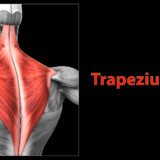
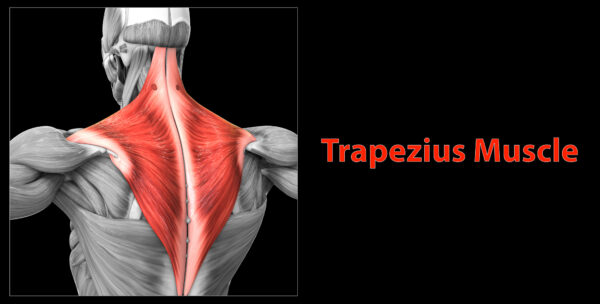
When injected into the trapezius muscles (or “traps”), botulinum toxin (commonly known as “Botox”) is called “Traptox.”
To get the most out of your injectable experience, it’s crucial to educate yourself on the process beforehand. If you’re looking for information on cosmetic treatments or injectables, we wouldn’t recommend TikTok as your first stop.
But there is one therapy that appears to be gaining popularity. With more than 2.3 million views and counting, Traptox is the newest therapy innovation.
Is this method of cosmetic enhancement worth it? Or are you just making it up? To clear up the confusion surrounding the new botox “trend,” you consulted with experts.
Traptox: What is it?
Although botulinum toxin (also known as “Botox”) is typically injected into the face to treat lines and wrinkles and help generate a more youthful appearance, when injected into the trapezius muscles (or “traps”), it is known as “Traptox.”
For what reason has it suddenly become popular? As Kim Kardashian was accused of photoshopping her shoulder in a recent Instagram photograph, the trapezius muscle became a trending topic online. Everything Kardashian posts to Instagram instantly becomes a trend, and it often encourages others to give it a try themselves.
What exactly is the trapezius muscle?
The trapezius is a big, superficial muscle that begins at the base of the skull and travels down the spine to the lower thoracic vertebrae, then extends laterally to the outer edge of the shoulder blade. It controls a wide range of motion in the shoulders and neck, from raising and stabilizing the shoulders to ensuring upright posture.
How does traptox function?

Botox works by inhibiting nerve impulses, hence decreasing muscular activity.
Botox reduces muscular activity by blocking nerve impulses. Its function is restored gradually, but frequent use of muscle relaxants can cause muscle atrophy and thinning. You might be familiar with its use on the legs of people who want to appear shorter. While fashions come and go, the system itself remains largely unchanged.
Keep in mind that in the UK, Botox is not approved for use in traps.
It stands to reason that Botox, when applied properly, can help to alleviate stress and produce muscular shrinkage, for example, in the masseter muscles to treat teeth grinding. This, in turn, would have the effect of making the neck appear longer and thinner and the shoulders appear more defined.
I would recommend that anyone looking for Botox in this or any other location do their own investigation to ensure they are going to a trained and knowledgeable medical professional.
The trapezius muscles originate in the upper back and neck and run across the tops of the shoulders and down the back. They can become painfully tight and strained if they are tugged or strained. The majority of ‘traptox’ users, however, appear to be motivated mostly by vanity. It seems that people started using traptox to try to reduce the thickness of their neck muscles for cosmetic reasons. who agrees that its rise to prominence may be traced back to media coverage of Kim Kardashian’s long, slender neck.
Dentox is a training program for medical professionals and other healthcare personnel to learn the proper use and administration of Botox. Dentox can help you expand your company while improving your service to current clients.
Now is the time to start learning about botox from experts by enrolling in a course. Make time for studying, and you could soon be able to perform miracles for each customer who passes through your door. Online Botox training may be found at https://dentox.com/all-courses/botox-training/, while live courses can be found at https://dentox.com/live-courses/.
Are Exercises OK after Botox? Truth and Lies Exposed


Numerous studies have shown that Botox is not taken into blood circulation or transported by injected muscles.
Many people considering getting Botox are concerned about returning to their normal workout program. Will getting some exercise change anything? What potential hazards might arise? In this piece, we’ll dispel some myths and give you some pointers on getting back into shape after getting Botox.
Myth #1: Dislocation will occur if you exercise too soon after getting Botox
The belief that exercising after Botox will cause your muscles to “pop” is a common urban legend. It is a common fear that Botox will spread from the injection site if you work out soon after receiving the injections, which could have unintended consequences. Nevertheless, this claim is not backed by any scientific data. Numerous studies have proven that Botox is neither absorbed into the bloodstream nor carried to other areas of the body by the muscles into which it was injected.
Myth #2: Exercise will hasten the fading of Botox
It’s also widely believed that physical activity will hasten the breakdown of Botox, diminishing the effects more quickly. Yet this is simply not so. The effectiveness of Botox depends upon variables such as the dose used, the individual’s metabolism, and the level of muscle activity in the treated area. Your exercise routine does not directly affect the length of your Botox treatment.
Tips for Working Out After Botox
If you have recently had Botox, you should know that there are specific guidelines you should follow before getting back into exercise. Consider the following suggestions:
- Allow your body to readjust and the Botox to take effect in the muscles it was injected into for at least 24 hours before you try anything else. You should give yourself at least 24 hours before starting any kind of rigorous physical activity.
- Do not expose yourself to too much heat, as this could compromise Botox’s ability to relax your muscles by increasing your blood flow. After receiving this treatment, you should wait at least 24 hours before engaging in any hot yoga, sauna, or steam room sessions.
- Pay attention to your facial expressions and try not to make too many if you have recently had Botox injections in areas like your forehead or around your eyes. Overactive movements in the treated area may affect the results. Keep your expression blank or at least relaxed while you work out.
- Remember to drink plenty of water; this will help your body in general and will also improve the effectiveness of your Botox. Take in plenty of fluids before, during, and after your workout to keep yourself properly hydrated. This may aid in promoting normal blood flow and speeding up the healing process.
- Watch out for activities that might cause the treated area to be subjected to too much pressure or friction. If you have had Botox injections in your forehead, for instance, you should not put anything tight around your head, like a headband, or a hat, on your head for a while.
- Inquire with your medical professional or the person who performed the Botox treatment about any specific aftercare instructions you may need to follow. They will tailor their recommendations to your specific requirements and the areas being addressed.
Keep in mind that everyone reacts differently to Botox, so it’s essential that you pay heed to your body if you experience any strange or worrying side effects. During or after exercise, you should cease activity and seek medical attention if you have any symptoms of chronic pain, severe swelling, or other unfavorable reactions.
Research on Exercise Following Botox

Exercise has no impact on the effectiveness or dispersion of Botox injections.
Few studies have looked at the effects of activity after botox injections, although many have looked at its mobility and distribution in the body. The results of these investigations consistently show that Botox stays put in the muscles where it was injected and does not spread to other places, even when subjects engage in vigorous physical activity.
According to research published in the Journal of Cosmetic Dermatology, Botox injections do not travel outside of the intended muscles when people work out. The workout did not affect the distribution or efficacy of Botox injections, according to another study published in Plastic & Reconstructive Surgery.
These findings, together with clinical experience, lend credence to the idea that physical activity does not significantly increase the risk of Botox treatments or diminish their efficacy. Keep in mind that everyone reacts differently to Botox, so it’s best to stick to the instructions given to you by your medical practitioner.
Pay attention to your physical cues and take expert advice
While it is normally safe to exercise after receiving Botox, it is important to pay attention to your body and stop if you feel any pain or discomfort. Exercise should be stopped and medical help sought if any discomfort, swelling, or other worrying signs develop during or thereafter.
Furthermore, there may be individual differences in regard to care, health background, and other factors. Thus, it is crucial to speak with your medical professional or the person who gave you the Botox. They will be able to provide you with specific advice based on your situation and answer any questions you may have.
Dentox makes it easier for medical and aesthetic experts to learn how to administer Botox injections safely and effectively. You can attend a seminar in one of our many locations all over the nation, or you can take one of our courses live, online, or on demand. Please visit https://dentox.com/live-courses/ and https://dentox.com/all-courses/botox-training/ to discover more about our in-person and virtual courses.
Can I get Botox if I am expecting a baby?


Injectable medications should be avoided by pregnant women.
The physicians agree that it will be a challenge. Let me explain why.
There are a lot of exciting things about being pregnant, and for some women, their skin changes in big ways. When you’re pregnant, you can also say goodbye to Botox until your doctor gives you the go-ahead, which will likely be after giving birth and nursing. That means you might get a few lines and wrinkles along the way.
Botox and other neuromodulators, which temporarily stop facial muscles from moving to smooth out wrinkles, may not be an option for an extended period of time. However, that doesn’t imply you can’t look for other safe alternatives for keeping your skin free of wrinkles and lines and in good shape. This is what dermatologists do for pregnant patients when they can’t use Botox. They tell them what the best topical ingredients are and what procedures to try.
Reasons to Avoid Getting Botox While You Are Pregnant
Pregnant women should avoid using Botox, as well as other cosmetic procedures and skin care chemicals. Botulinum toxin, which is produced by the bacterium Clostridium botulinum, relaxes the muscles. The toxin can cause botulism, which in turn can cause weak muscles, spasms, stunted muscular growth, and difficulty breathing if it reaches the developing baby.
Pregnant women should avoid using injectable medications. Despite the lack of conclusive research on pregnant women, animal studies have shown a risk to the baby when Botox is administered, making it a category C medicine.
So, it is safer to play it safe and avoid Botox injections for cosmetic purposes. However, research shows there is no increased risk of birth abnormalities in the offspring of patients treated with Botox to relieve headaches during pregnancy. Cost-benefit analysis is key. If the potential benefits of treatment outweigh the hazards involved, then it is acceptable to go ahead with the treatment. Nonetheless, due to the hazards involved, it is recommended that patients not be treated during pregnancy with elective aesthetic treatments.
Yet, just because you can’t have your regular Botox injections doesn’t mean you can’t maintain supple, wrinkle-free skin and a youthful appearance while you’re carrying a child. During pregnancy, facial swelling can plump the face for extra fullness, making creases and lines less obvious, according to a board-certified dermatologist.
Safer Botox Substitutes During Pregnancy
Although cosmetic Botox should never be used during pregnancy, these alternatives can help you maintain a youthful and radiant appearance.
Facials and chemical peels
HydraFacials and other professional procedures can temporarily smooth the skin. A chemical peel is a safe and effective exfoliation method that can be used during pregnancy to improve the skin’s texture and tone and diminish the look of fine lines and wrinkles.
Traditional skin cleansing facials, complete with extractions and face massage, are also on the list of safe skincare procedures for pregnant women.
Dermaplaning
Many medical professionals also consider dermaplaning to be a safe exfoliation option during pregnancy. This procedure, which is commonly performed in conjunction with a facial, involves the use of a sharp surgical blade to remove dead skin and peach fuzz from the face.
Topical Products
Although retinoids should be avoided at all costs during pregnancy, hyaluronic acid can be used to provide a similar effect. Exfoliating acids, such as glycolic acids in low doses and azelaic acid, can improve texture and tone, and peptides stimulate collagen formation. Vitamin C can also be helpful for pregnant women. Bakuchiol, a retinol substitute derived from plants, is a popular choice among some expecting mothers.
When can I start getting Botox again?

Botox can be given after delivery, but because there isn’t sufficient research on the subject, it’s not recommended while breastfeeding.
You don’t need to rush out and get Botox right after giving birth. Although Botox can be administered after delivery, it is not advised during breastfeeding because of a lack of research on the topic.
Wait until postpartum facial swelling has subsided, too. Some women dislike the way they look with Botox if they’re still bloated after giving birth, and this is especially true if they’ve just given birth and the face is still holding onto water.
Do you wish to become an expert Botox injector?
The top training programs will prepare you to administer Botox safely and effectively. Get started learning about botox from industry experts by signing up for a course right away. Put in the work, and you’ll soon be able to perform miracles on any customer who passes through your door.
Dentox is a training program for medical practitioners that teaches them how to give Botox injections to their patients in the most effective and safe way possible. Dentox is able to assist you in expanding your business while simultaneously improving the quality of service you provide to your existing clientele.
Dr. Howard Katz is widely regarded as a leading authority in injectable training. He not only lectures and distributes course materials in a traditional classroom setting but also online. Dentox offers both online and in-person Botox training, with the former available at https://dentox.com/all-courses/botox-training/ and the latter at https://dentox.com/live-courses/.
Controversies surrounding the Use of Botox for Preventative Purpose

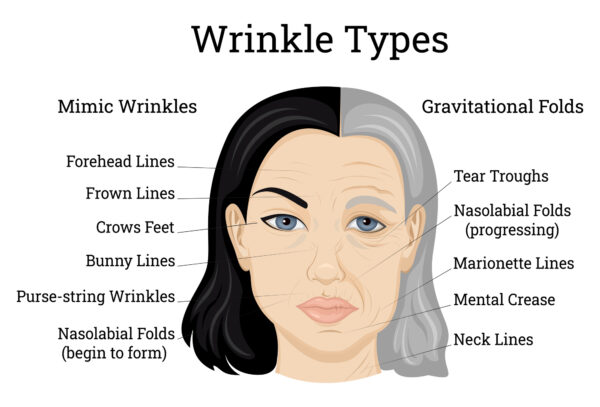
Preventative toxin injections are best for those predisposed to deep or many wrinkles.
Have you ever wondered why certain people’s faces seem to age incredibly slowly? The role of good skincare, genes, and the environment cannot be overstated. But so-called “preventative” injectable tweaks can also be effective when done properly. While cosmetic neuromodulators like Botox, Alluzience, Azzalure, and Bocouture are most commonly thought of as a means to erase the signs of aging by relaxing the underlying muscles, they are increasingly being used to prevent wrinkles from forming in the first place.
Who should receive preventative toxin injections?
Neuromodulators can reduce the appearance of lines that result from persistent skin creases. Hence, if we restrain some of our more expressive muscles, we can reduce skin creasing and delay the onset of fine lines and wrinkles (or potentially not at all). The objective is to chill out the muscles without entirely paralyzing them.
Those who are highly predisposed to developing deep or numerous wrinkles are the best candidates for preventative toxin injections. How can you know whether something is going to happen? The person in question may have noticed that their mom or another person in their family had deep or excessive expression lines. Thinner, finer skin and more expressive faces are also predisposed to wrinkles at an early age (as opposed to thicker, oilier skin).
It has nothing to do with chronological age and everything to do with the state of the person’s skin. Yet, someone younger than 25 years old would rarely benefit from Botox or a similar treatment. Those who have yet to develop any wrinkles or fine lines would choose a corrective rather than preventative strategy, and hence it would be useless for them.
The Advantages of Preventative Toxin Injections

Preventative treatment can reduce wrinkles as you get older.
There is no denying the value of preventative care if you qualify for it: You can expect fewer wrinkles as you get older. Preventing problems is considerably simpler than fixing them.
As an analogy, imagine a piece of paper that becomes crumpled up; if the paper is squashed all the way into a ball, it will be much more difficult to smooth out. Preventative injections of toxins, on the other hand, should be evaluated on a particular circumstance basis. Choosing the right time for you, your skin, and your face is a difficult balancing act.
The subtlety of anti-wrinkle injections as a prophylactic measure is a massive bonus. Many of us would credit good genes if anyone has always had “beautiful skin” and just seems to age more slowly, but it could be that they began using light Botox sooner than their colleagues, which would explain the difference. But if someone who appeared exhausted throughout their thirties suddenly appears to be in their prime, you might suspect that they may have had some assistance of some sort.
Negative Aspects of Preventive Toxin Injections
Regrettably, prophylactic toxin injections may have the opposite impact of what was intended. Using a lot of Botox at an early age can cause you to appear older than you are. Throughout time, a frozen expression can develop from an overly aggressive start.
Being acclimated to a face that changes expression less and less poses a real threat. Heavy usage of neuromodulators can age a younger face, leading to an odd or distorted appearance, and this might shift people’s perception of what is normal.
Certain areas, like the frontal muscle, could potentially not withstand prolonged, intense treatment. The horizontal lines across your forehead are the result of the contraction of this muscle, which also causes your eyebrows to rise. Over-relaxing this muscle may hasten or exacerbate the natural sagging of the eyebrows that occurs with aging This is of particular significance for those who naturally have sagging or hooded eyelids or unarching brows.
Furthermore, there is a dearth of research on preventive toxin injections because they are still a relatively new occurrence. In contrast to the movies, we don’t have a bunch of 70-year-olds who have been getting micro-dosed and individualized Botox to see how they turned out. See a specialist, though, and the odds of looking completely out of place after ten or twenty years are drastically reduced.
The financial burden is yet another real-world drawback to a preventative strategy.
Excellent toxin injections can be quite pricey, while cheap toxin injections are usually not very effective. Trying to squeeze it into your budget by skimping on things like high-quality, medical-grade skincare or daily sunscreen is not the way to go. One may or may not be capable of including preventative injectables into their overall skincare budget starting in their twenties.
If you wish to “prevent”, you will also have to “commit” to Botox [or another neuromodulator] for a significant period of time. This is a procedure that must be performed every several months. This is true whether you’re trying to stop something or fix it, so it’s certainly worth pondering.
Preventative Toxin Injections: Other Factors to Consider
Botox isn’t intended to zap away all facial expressions, just soften them. The primary objective is not to have a frozen face; youthful faces move! So, if you’re thinking about preventive treatments, you want to make sure you’re working with a professional who can help you reach your personal objectives while keeping your natural look.
Medical practitioners can now get training on how to use Botox. Visit https://dentox.com/all-courses/ for online courses or https://dentox.com/live-courses/ for courses with real patients. You can make the lives of your patients better by discovering new abilities that enhance their looks, health, and vision.
Kim Cattrall’s Reasons Why Fillers and Botox Are Worth It
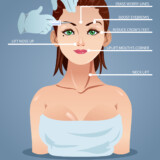
Actress Kim Cattrall recently talked about her concept of beauty and why she doesn’t mind getting plastic surgery. She claimed that she is currently in her sixties and is actively engaged in every possible effort to delay the onset of old age.

If you’re curious about fillers and Botox but aren’t sure if they’re for you, you have a lot of options to investigate and try out.
Here, Kim Cattrall reveals her thoughts on getting older. The 66-year-old recently opened up about the beauty treatments she takes, detailing the various cosmetic procedures she undergoes and the reasons why they go beyond just using makeup.
In an interview published on June 4th, Kim said that she is in her 60s and is doing everything in her power to slow down the aging process. There are numerous options available for you to explore and test out to determine if fillers and Botox are right for you. This isn’t merely a matter of pride.
However, the ex-Sex and the City star admitted that being a public figure has influenced her decision to have injectable cosmetics.
She said that in her work life, she takes care of herself and looks the part of the type of woman she plays.
Kim is a supporter of fillers and Botox, but that doesn’t mean she wants to have an unrecognizable look. She implied that this is possible with adequate money and, more crucially, a competent surgeon. There is no way to overstate the importance of this. You wish you could somehow duplicate your appearance.
The bottom line is that Kim wants to appear her best in all circumstances, not just in front of the camera.
The forthcoming second season of And Just Like That will feature a major role for her. Kim will be repeating her iconic role as Samantha Jones, while the specifics of her involvement in the SATC spinoff have been kept under wraps. Variety reported on May 31 that, throughout the filming of Kim’s appearance in March, she did not speak with any of the other cast members or showrunner Michael Patrick King.
Some of the actors weren’t even aware that Kim had shown up. Evan Handler, who plays Harry Goldenblatt, Charlotte York’s husband, acknowledged he had to look up the information himself.
At the Ed Asner & Friends Celebrity Poker Night on June 3, Evan Handler told people that he heard the news at the same time as you. It seems that [her cameo] was filmed in a garage, far away from any other cast members. Hence, his only option is to invite her inside his home while they watch it together on television.
The actress will always put her best foot forward, even if we don’t know much about her cameo. Kim isn’t the only famous person to talk about having cosmetic treatments.
The former Sex and the City star discussed her decision to get cosmetic injections.
She revealed to The Sunday Times in an interview published on June 4 that she is in her 60s and is actively trying to slow down the aging process in every way she can. There are other options out there, like fillers, Botox, and others, that you can explore to find out whether they’re right for you. This goes beyond simple pride.
By enhancing their physical appearance, trained medical professionals help patients feel better about themselves. Patients will benefit from the knowledge they gain during their training.
Training for administering Botox has become available to medical professionals. You can sign up for a seminar at any one of our numerous U.S. sites, or you can take advantage of our live, online, or on-demand options. Visit https://dentox.com/live-courses/ and https://dentox.com/all-courses/botox-training/ for details on both live and online Botox training.
At the age of 51, she found the secret of halting ageing forever. Is it true that she no longer needs Botox, which she started using in her 40s?


You can look younger with the correct clothes, hair, and cosmetics. If you want to look young even after waking up, Botox is the best way to go.
A mother in her fifties who is passionate about encouraging other women has found it easy to reverse the effects of aging.
Annamaria Kalebic revealed her strategy for maintaining a youthful appearance without resorting to Botox injections.
It appears that the key factors are attire, cosmetics, and hairstyle.
In response to a TikToker, she said: “I’m not going to lie and say I’ve never had Botox; I started getting injections when I was in my forties. So why do people suddenly tell me I look years younger? In terms of fashion, I’ve evolved.”
Kalebic continued, “I’m approaching 52, and I was hoping to show that a young appearance can be attained without resorting to beauty treatments.”
According to her, people are constantly asking her, “Anna, you’re 51, and you seem to be reverse-aging, how are you managing it?”
People have noticed a change in me because I don’t believe I looked old in my 40s, but I did start dressing more like I thought people my age should.
Now that I’m 50, I’ve completely abandoned that mindset.
The mother reflected on how she used to certainly dress in slim pants, a floaty top, and a purse when she was in her 40s.
There’s nothing inherently wrong with that, but ever since I started making these minor adjustments, people have been exclaiming, “Oh my goodness, you look so much more youthful!”
I’m not making an effort to disguise my age; I’m just dressing more naturally, and that seems to have that effect.
The influencer (@annamariakalebic) revealed that she no longer wears skinny jeans but rather prefers looser pants.
She declared, “The flowy top is gone. Crop tops that reach my jeans or tuckable T-shirts are the only options.
I no longer carry a mommy bag and now like cross-body bags since they are so much more convenient and comfy.
She has upgraded her cosmetics from what she used to wear in the 1990s because it no longer suits her. This is another adjustment she has made.
This applies to brown or naked lip liners.
She went on to say, “Obviously, hair can have such an impact.”
“I visit my hairdresser and want French fringe with face-framing layers since they are softer on the face as well as cover my sidelines.”
“My advice would be to invest in yourself if you’re feeling helpless or need to recharge.”
“Doesn’t doing that give other women the freedom to do the same for themselves since we are all influences on one another?”
The right clothes, hairdo, and makeup can take years off your appearance. However, Botox is your best bet if you want to maintain your youthful appearance even after waking up in the morning.
Have you ever thought about becoming an expert in the technique of injecting Botox? Dentox is ready and waiting to get you started on your journey. Get in contact with us right away if you have any questions regarding the Botox training that we offer in-person, on-demand, or online. Please visit https://dentox.com/live-courses/ and https://dentox.com/all-courses/botox-training/ if you would like additional information regarding either our in-person or online Botox training courses.





